Search the Community
Showing results for tags 'detector tech'.
The search index is currently processing. Current results may not be complete.
-
Legendary metal detector engineer George Payne laid the foundations for much of what we consider to be modern metal detector technology. He or companies he worked for hold a host of basic patents. I tripped over this old lawsuit between White's Electronics and the old Teknetics company (acquired by First Texas in later years) over George's invention of basic target discrimination / target id technology. The following is from the public record of the legal findings at https://law.justia.com/cases/oregon/court-of-appeals/1984/677-p-2d-68.html: I thought it provided an interesting peek at some early industry history and so here you go..... Decided February 22, 1984. *69 J. Pierre Kolisch, Portland, argued the cause for appellant. With him on the briefs were Jon M. Dickinson, Francine H. Gray and Kolisch, Hartwell & Dickinson, Portland. Edward T. Monks, Eugene, argued the cause for respondents. With him on the brief were Kenneth A. Morrow, Morrow, McCrea & Divita, Eugene, and Gary S. Kindness, Seattle, Wash., of counsel. Before GILLETTE, P.J., and WARDEN and YOUNG, JJ. GILLETTE, Presiding Judge. Plaintiff White's Electronics, Inc. (White's) commenced this action seeking the imposition of a constructive trust for its benefit in all rights, patentable or otherwise relating to an invention developed by defendant George Payne. White's also sought an injunction restraining defendants from selling any product embodying such an invention and from using any trade secrets or other proprietary information belonging to plaintiff. The trial court denied White's any relief. We affirm. White's is a manufacturer of metal detectors. In 1969, White's hired Payne, an electrical engineer, to invent new metal detector technology. In 1971, Payne signed *70 an employment agreement with White's that stated that he would assign to White's any invention that he developed during and for six months after termination of his employment that related to White's activities or was the result of tasks assigned by it. During this period of employment, Payne assigned to White's two patents covering inventions pertaining to metal detectors. In mid-1976, he terminated his employment and went to work for Bounty Hunters, one of White's competitors. He remained there until late 1978, when he sought reemployment with White's. Because of a noncompetition agreement with Bounty Hunters, he did not become reemployed by White's until January, 1980. He did, however, work as a consultant for White's during the intervening period. When Payne was rehired, he did not sign a new employment agreement. As during his previous employment, he worked to develop innovations in the metal detector field and to solve problems related to White's product line. He assigned one patent to White's during this employment period. The evidence concerning the events of January, 1981, is both conflicting and confusing. Payne testified that on January 9, 1981, he conceived an idea that would enable a metal detector automatically to provide the user with target identifying information, unlike any detector then on the market. He stated that he told defendant Morris, White's marketing manager, of his idea, but that he did not work any further on its development until January 15, when he assembled a breadboard a board containing electrical circuits to test his idea. The breadboard failed to achieve the desired result. On January 17, 1981, following a period of internal management disruption at White's, Payne and Morris both quit. Payne testified that, on January 19, 1981, while working to develop his idea of January 9, he "found something that is going to make this thing work, or allow me to continue development of it." He stated that, following this "breakthrough," he still had to work for many more months before his concept was perfected. On January 28, 1981, Payne and Morris, along with defendant Smith, organized defendant Teknetics, Inc., to market metal detectors in direct competition with White's. In December, 1981, Teknetics introduced a metal detector which incorporated Payne's target-identification concept. Plaintiff contends that Payne's "breakthrough" on January 19, actually occurred earlier while he was still employed by White's. In support of this contention, plaintiff introduced Payne's engineering notes containing circuitry designs dated January 18, 1981. Payne admitted that the date on those notes was in error and that they were probably prepared sometime before the 18th. Plaintiff's expert, an electronics engineer, testified that he or someone similarly skilled could build a target-identification circuit based on the information provided in the drawing. Payne testified to the contrary, stating that the key element to his target-identification concept did not appear in his notes until January 19, after he had left White's employ. The trial court found that Payne conceived his target-identification concept on January 9, but that he did not exert time and effort to develop it until after January 17, the date he left White's employ. According to the court: "The idea achieved the status of invention sometime in March of 1981, as evidenced by the order for print out circuitry systems from another company. Prior to reaching this posture, [Payne] had to address himself to and solve problems of target identification as they related to ground rejection." The trial court concluded from the foregoing that plaintiff was not entitled to either the assignment of the patent or the imposition of a "shop-right." This appeal followed. Absent an agreement to the contrary, an employe who is hired to invent, and who succeeds during his term of service in accomplishing that task, is bound to assign to the employer all rights in the *71 invention. United States v. Dubilier Corp., 289 U.S. 178, 187, 53 S. Ct. 554, 557, 77 L. Ed. 1114 (1933); Mainland Industries v. Timberland Mach., & Eng., 58 Or. App. 585, 589, 649 P.2d 613, rev. den. 213 Or. 801 (1982), cert. denied ___ U.S. ___, 103 S. Ct. 1498, 75 L. Ed. 2d 930 (1983). Furthermore, the practice by an employe of assigning patents to an employer constitutes persuasive evidence of a duty to assign. Mainland Industries v. Timberland Mach. & Eng., supra, 58 Or. App. at 591, 649 P.2d 613. In this case, when Payne was rehired by White's in 1980, no new employment agreement was executed. Although Kenneth G. White, president of White's testified that he intended to rehire Payne on the same terms as his previous employment, the issue apparently was never discussed by the parties. The evidence is insufficient to support a conclusion that the 1971 agreement was revived by Payne's reemployment. However, even without an express agreement, we find that Payne was obliged to assign to White's inventions created during his employment. Payne was hired precisely because of his exceptional inventive abilities in the metal detector field. His duties were to invent and develop improvements in White's product line. This, in conjunction with Payne's practice of assigning patents to White's, including during his last period of employment, convinces us that he had a duty to assign all inventions arising during his employment. Thus, the central issue in this case is whether Payne's target-identification concept was sufficiently developed at the time he left White's employ so as to constitute an "invention" to which White's is entitled. Because White's is seeking the imposition of a constructive trust, it must prove its case by strong, clear and convincing evidence. Pantano v. Obbiso, 283 Or. 83, 87, 580 P.2d 1026 (1978). We are unable to find any Oregon cases dealing directly with this issue. Both sides cites numerous cases from other jurisdictions in which the term "invention" has been defined under a variety of factual circumstances. Most courts have adopted a definition which requires that an invention be something more than a thought in an inventor's mind. As stated in National Development Co. v. Gray, 316 Mass. 240, 55 N.E.2d 783 (1944): "Of course there is a distinction between the conception of an idea and the reduction of the idea into practice. The idea is only the starting point, and it does not become an invention until it is developed and perfected and becomes embodied in some tangible form which becomes some novel and useful device or process." 316 Mass. at 249, 55 N.E.2d 783. In Gray, on which plaintiff places great reliance, defendant Lawson, an employe of a company that manufactured shoe-heeling machinery, conceived of an idea for an improved model of that kind of machine while he was in that company's employ. Before he quit, he had reduced his idea to a drawing. The court ruled that, even though he had not yet constructed a working model of the machine, "* * * the idea had crystallized into such definite form by the time Lawson left the plaintiff's employment that he and those with whom he spoke concerning the new machine knew in a general way the principles governing its operation and its probable practical value. * * "It is plain from the evidence * * * that the drawing was the nucleus from which the machine emerged; that whatever Lawson accomplished up to the time he quit belonged to plaintiff, * * * that the activity of Lawson in reference to the new machine constituted a breach of his contract with the plaintiff; and that the latter was entitled to the patent." 316 Mass. at 250, 55 N.E.2d 783. We find the National Development Co. analysis helpful, but we reach a different result as an evidentiary matter. In our view, the evidence in the present case is not clear and convincing that the unsuccessful breadboard Payne assembled prior to his leaving White's employ was the "nucleus" *72 from which his target-identification concept emerged. We are not convinced that, at the time Payne left White's, his idea had "crystallized into a definite form." In fact, one of the key elements of the idea was not developed until after his resignation. When Payne left White's he left with an idea and a goal, but not with an invention. White's, therefore, is not entitled to a constructive trust or to assignment of the patent. White's argues that such a holding will encourage employed inventors deliberately to refrain from putting ideas into tangible form in order to circumvent employer's rights. Our response is that employers could protect themselves by requiring inventors to enter into contracts that provide that the employer is entitled to any inventions conceived during the term of employment and during a reasonable period of time after termination. In fact, White's required Payne to sign such an agreement during his first period of employment. Its failure to obtain such an agreement the second time around is fatal to its case. White's contends in the alternative that it is entitled to a "shop-right" in Payne's target-identification concept. A "shop-right" is a non-assignable license to a patent granted to an employer when an employe who works in a general or noninventive capacity creates an invention using the employer's time and materials. Mainland Industries v. Timberland Mach. & Eng., supra, 58 Or. App. at 593, 649 P.2d 613. Payne, however, was hired specifically as an engineer whose duties included inventing and developing improvements in White's product line. Thus, the facts do not warrant the application of the "shop-right" doctrine. White's final contention is that it is entitled to a permanent injunction to prevent defendants from using trade secrets, propriety knowhow or confidential information acquired from White's. Our review of the record does not reveal any evidence to support the granting of such an injunction. Affirmed.
-
Maybe this is a dumb question wit regard to PI machines why is that one machine will excel at small nuggets but can't do so well on bigger nuggets., Doesn't make sense to me. It would seem logical that iit can find small stuff big stuff should be easy?
-
Minelab Equinox will not be the detector of the year for ever. What will be next?
-
The ads came from mags dating back to 66. I can say I remember them all. Just maybe you remember some if not all. Chuck
-
Hi Steve: Just re-read your "Steve's Guide to Threshold, Autotune..." It helped a lot. Thanks. I do have a question though. I understand V/SAT. It's about how fast autotune re-adjusts the threshold after encountering some disturbance like a target. However, I'm unclear on how that relates to Ground Balancing and Tracking. It sounds like they are the same. Would you please explain that? Thanks
-
What are some of the least expensive pi machines? Can used ones be found?
-
I want To know that for the multi IQ . I suspect park 1 ,field 1 , beach 1 and 2 . To no run in 40khz in his multi. So i dont understand why minelab tell the 5 frequency run in multi ? I wonder what are the combination? 2? 3 ? 4 ? Frequency? And wich frequency? Now i think some people must know that. It can be helpful for choosing the good mode. Anyone have an idea ?
-
Hello , It would be great if the youtubers who have lot of followers make a video of that to share at maximum . - Take 12-15 differents coins of your country ( the coins you use all the day ) -Make a pile (heap ?) with that coins ,like a little tower -Keep this pile beetween your thumb and other finger . -Swing that in front of the coil , at 3-4 inches , the side of the coins ! -Now try that with all the detect mode , not need to change factory presets ( maybe only the accept to 0,1,2 in field 2 ) , you are free to try differents settings later . -The only and important setting for the moment is to change frequency , try 5,10,15,20,40 and multi in each detect mode . Of course multi in the two beach and 20,40,mutli in gold . What is happening ? I know the results , but i want to know the result of the coins of USA,England, australia ,canada .... So please share your results in comments or video Make that with different detectors , if you have impact or deus or other who have various frequency , try to switch all frequency . You can try that with HF white coil if you have , but .... The conclusion is multi IQ obsolete the others single freq . We can debate of that .
-
If you read between the lines on the various search modes, Minelab seems to imply that the ground balancing is done automagically, regardless of whether you do a ground grab or not. For example: Park 1 Multi-IQ processes a lower frequency weighting of the multi-frequency signal, as well as using algorithms that maximise ground balancing for soil, to achieve the best signal to noise ratio. Hence Park 1 is most suited for general detecting and coin hunting. Park 2 Multi-IQ processes a higher frequency weighted multi-frequency signal while ground balancing for soil. Field 1 Multi-IQ processes a lower frequency weighted multi-frequency signal, as well as using algorithms that maximise ground balancing for soil, to achieve the best signal to noise ratio. Hence being most suited for general detecting and coin hunting. Field 2 Multi-IQ processes a higher frequency weighted multifrequency signal while ground balancing for soil. Beach 1 Multi-IQ processes a low frequency weighted multi-frequency signal, and uses special algorithms to maximise ground balancing for salt. Beach 2 MultiIQ processes a very low weighted multi-frequency combination, using the same algorithms as Beach 1 to maximise ground balancing for salt. Not to be confused with auto tracking, but it appears that the Equinox is doing some ground balancing specific to each search mode irregardless of whether you do a ground grab (auto ground balance in EQ speak) or not. Not that I would skip doing a ground grab, but I find it interesting that Minelab seems to be implying they process the ground balancing differently for each search mode, even if you don't do it. Steve do you see this as the case?
-
The World's First Smart Detector & Imaging System that can display the shape, depth and dimensions of underground metals in real time. Ideal for Deep Treasure Hunters, Archaeologists, Municipalities, Utility Companies, CSI and Law Enforcement Agencies. http://noktadetectors.com/invenio-metal-detector.asp
-
When Minelab offered the statement that the new Equinox would obsolete single frequency VLF detectors there was a hue and cry of disbelief from a group of end users. Yet the manufacturers, even before the first Equinox was available for retail sale confirmed that statement by lowering prices. There were two aspects of the statement issued by Minelab that seems to have been missed by some end users: 1. The statement was 90% aimed at other manufacturers. 2. The statement was forward looking at the economic viability of future production of single frequency VLF’s. Now an end user may think that the Acme 4000 was the greatest relic detector ever made and cannot be displaced by an Equinox. However if the sales numbers fall to a certain point then the Acme 4000 will end up being discontinued. So even if an end user loves and is totally invested in an Acme 4000 there is no guarantee it will survive the sales onslaught of the Equinox. To those who say “hogwash” then may I ask how many new recent model BFO or T/R detectors do you see being for sale by manufacturers? Why aren’t there any? Because Technology moved on, just the same as is occurring with the Equinox. Tough time to be a product or sales manager at a competing metal detector company!
-
Lots of good stuff here to chew on! From https://www.minelab.com/anz/go-minelabbing/treasure-talk/equinox-technologies-part-4 EQUINOX Technologies (Part 4) March 20, 2018 10:05am Minelab Electronics This is the fourth installment in a blog series introducing and explaining the technologies inside our new EQUINOX detectors… (Read Parts 1-3 here.) In Part 3 we ended with mentioning the different Multi-IQ “frequency weightings” for the different search profiles. Part 4 explains further why it is not a simple matter of just referring to specific individual frequencies for learning more about Multi-IQ technology. Let’s now consider one of the key practical detecting outcomes and then discuss how this was achieved… “A lot of people are going to be surprised at how well the machine works in saltwater. At the outset we weren’t sure whether reliably detecting micro-jewelry in a conductive medium was even possible, but – with the help of our field testers and the subsequent fine-tuning of the Multi-IQ algorithms – we’ve found the EQUINOX to be more than capable.”Dr Philip Wahrlich Background and considerations While Multi-IQ may appear as ‘magic’ to some, to our team of signal processing experts, it’s the result of a significant number of man-years of development. So where did they start? By assessing the metal detectors and technologies available in the market at that time, along with typical customer perceptions about their practical applications; and actual detecting results achieved: So, an important goal with developing Multi-IQ technology was to retain the above simultaneous multi-frequency advantages AND greatly improve performance in the two key areas where many single-frequency detectors typically excel – fast recovery in iron trash and finding low conductors in all conditions. Speeding up the process Most comparable low-power Continuous Wave transmit-receive detectors (for the same coil size) will have a similar raw detection depth at which the transmit signal penetrates the ground and has the potential to energize a target. To increase detection depth significantly typically requires higher power and Pulse Induction technology. This has advantages for gold prospecting, but discrimination is poor for identifying non-ferrous targets. While we continue to push for depth improvements, Multi-IQ also aims to provide substantial speed improvements, resulting in being able to better find ALL non-ferrous targets among trash in ALL locations. You could therefore say “fast is the new deep, when it comes to EQUINOX!” Let’s start with considering signal processing not as a ‘black box’ where ‘magic’ happens, but more as a complex chain of applied algorithms, where the goal is to more accurately distinguish very small good target signals from ground noise, EMI and iron trash. Now, ‘fast’ by itself is not enough – you can have fast with poor noise rejection and poor target identification, giving no great advantage. Fast is also not just a result of microprocessor speed. Processors operate at much higher speed than is needed to ‘do the signal processing math’. You can think of the signal processing chain broadly as a set of filters and other processes which are applied to the metal detector signals to convert these signals into useable, informative indicators, such as an audio alert or a target ID. For Multi-IQ, keeping the ‘good’ properties of these filters, while keeping them lean and removing unnecessary processing, was an important step towards achieving ‘fast’ for EQUINOX. It’s also important to recognize that these filters are not the coarse filters of the analogue electronics hardware of last century – it all happens in software these days. Perhaps think of the older analogue TV standards versus current digital TV. (Standard digital HDTV has approx. 10 times the resolution of analogue NTSC.) With metal detectors, a fast higher resolution filter set will result in improved target recognition. Factoring in the ground conditions However, speed without accuracy is not enough to produce a “game changer” detector – and improved accuracy cannot be achieved with a single frequency alone. Why? – “multi-frequency has more data-points” Philip Beck, Engineering Manager. This is worth explaining in more detail… All transmit-receive detectors produce in-phase (I) and quadrature (Q) signals that can be processed in various ways depending upon the response received from targets, ground and salt. This processing happens through ‘channels’ that have different sensitivities to the different signals received. It is important to recognize that channels are not exactly frequencies. This is why it is more complex to explain than just correlating optimum frequencies to specific target types. With a single frequency detector there are two basic channels for information (i.e. I and Q) that respond differently to good and bad signals, depending upon the frequency of operation and whether you are looking the the I or Q signal. It is also possible to scale and subtract these signals, while taking ground balance into account, to best maximize good signals and minimize bad signals. You could thus think of single-frequency being Single-IQ, with a limited set of data (e.g. I, Q, I-Q, Q-I) that works well for a particular set of conditions. To further enhance performance for a different set of conditions, you need to change frequency and detect over the same ground again. Therefore a selectable single frequency detector has an advantage with more data available, but not all at once (e.g. I1, Q1, I1-Q1, Q1-I1 OR I2, Q2, I2-Q2, Q2-I2 for as many frequencies that you can select from). Now, getting back to Philip Beck’s “more data-points”, and just looking at two frequencies, a simultaneous multi-frequency detector would be able to process (for example) I1, Q1, I1-Q1, Q1-I1 AND I2, Q2, I2-Q2, Q2-I2 AND I1-Q2, Q2-I1, I2-Q1, Q1-I2 to give better detection results. Increase the number of frequencies further and the number of extra data-points also increases accordingly. What Multi-IQ does is process different optimized channels of information (not just individual frequencies) for the different modes. We have previously explained this as “frequency weighting” (in Part 3), where the various EQUINOX Search Profiles are matched to the respective ground conditions and target types. Here is a very simplified example where you can see the result of processing more than a single channel of information (remember, a channel is not a frequency): Channel 1 has a strong target signal, but the salt signal is stronger still. Channel 2 has weaker signals for soil, salt and the target. If the detector just responded to either Channel 1 or Channel 2, the target would not be heard through the ground noise. If the detector processes a subtraction of the channels (e.g. ch.1-ch.2), then it is possible to ignore the ground noise and extract a strong target signal. Now, think back to the high number of possible combinations of I and Q for simultaneous multi-frequency compared to single-frequency and the frequency weightings for the modes. All of the EQUINOX Park, Field, Beach and Gold Search Profiles have dedicated signal processing to best suit the conditions and types of targets being searched for. Conclusion Multi-IQ = more data-points = sophisticated processing = better ground noise rejection = more finds Just as targets are more sensitive to certain frequencies, so is the ground – an important reason why air testing has inherent limitations when comparing detector performance. As soon as you have ground to consider in the signal processing equation, it can greatly impact on the ability of a single-frequency detector to accurately identify a target. Also, the deeper a target is buried, the weaker the target signal is, relative to the ground signal. The most difficult ground response to eliminate is the salt response, which varies greatly between soil, dry sand, wet sand and seawater. It is not possible to eliminate the salt response and the soil mineralization response (e.g. black sand) with just one frequency. However, within the carefully calibrated Multi-IQ channels, EQUINOX is able to identify both signals and therefore mostly ‘reject’ them (just as you would notch discriminate an unwanted target) BUT still detect gold micro-jewelry. If you haven’t tried EQUINOX yet – why not give it go – with Multi-IQ being fast AND accurate, those diminishing and elusive targets are running out of places to hide! (Part 5 to follow…)
-
So Im curious... with Makro/Nokta we saw a ton of You Tube videos on the Kruzer in various settings. Even Dilek posted on the machine on the forums before it came out. Even the AT Max we say a little here and there on the unit. Where was the early info on the Equinox? I know there was/is a "gag order" in place, and boy did they do a good job... not a word from anyone hardly! But when does the gag order lift? 1 year, 10 years Never? I'm interested in the "seasoned" testers that were able to use early models. These early thoughts to me are a real gem on what was changed, improved, altered. Any ideas?
-
Robert Frost Two roads diverged in a yellow wood, And sorry I could not travel both And be one traveler, long I stood And looked down one as far as I could To where it bent in the undergrowth; Then took the other, as just as fair, And having perhaps the better claim, Because it was grassy and wanted wear; Though as for that the passing there Had worn them really about the same, And both that morning equally lay In leaves no step had trodden black. Oh, I kept the first for another day! Yet knowing how way leads on to way, I doubted if I should ever come back. I shall be telling this with a sigh Somewhere ages and ages hence: Two roads diverged in a wood, and I— I took the one less traveled by, And that has made all the difference. Another title for this may have been the Tale of the Equinox In reading many forum posts across the Internet there appears in many instances to be an undercurrent of anger towards the Equinox simply because Minelab produced a detector with the technology and feature set it possesses, and not a U.S. based competitor. Minelab took the road less traveled! More than a decade ago First Texas purchased Fisher Labs and also took into their employ the engineer that developed the CZ a multi-freq based platform. So right from the start they had the ingredients in house to produce an Equinox type of detector. When they began releasing their F75 and T2 series which were ergonomic, lightweight, and modern interface based detectors, a hue and cry came from CZ owners that pleaded for a CZ update with similar characteristics. Waterproofing to 3m would have just been icing on the cake! But alas it was not to be and after a while CZ owners lost faith that it would ever happen. Another U.S. manufacturer White's has also had multi-freq technology at their disposal for a very long time and instead of targeting their last multi-freq release at a sub $1K lightweight detector, they decided to go after the Minelab deep turf machines. Even in their more recent mid-priced efforts multi-freq is nowhere to be found. Garrett should at least get some credit for producing a waterproof mid-price detector because it was a milestone for the industry. But with the second generation if they were capable of producing multi-freq in the AT chassis with a reasonable premium, say $200USD more, then they would likely have had a real high selling model. But they dropped the ball also. Tesoro, well........ I like Tesoro but I don't think anyone has expected them to move the needle now for a very long time. So U.S. manufacturers have squarely squandered the opportunities for a decade or more. And now there is a Dragon in their house. And it is not the Equinox 800! As Steve H. has mentioned a couple of times with very little reaction, the Equinox 600 is a very big danger to the financial well being of many metal detector companies. Right now because of initial demand the unit is likely selling at or close to the $649USD MSRP. By this time next year I would not be surprised to see a street price of $599USD and possibly lower. $589USD or $579USD may not be out of reach. Anyone with any sales or marketing experience can go to their favorite online metal detecting seller and take a look at the offerings between $450USD and $600USD. Comparing features and performance on units in that range will be eye opening. The problem with the reaction that some companies have already taken, which is to push their former flagship models down into mid-price range, is that they then have to push their mid-price units down into entry level range which will lead to simply pushing the entry level units out of the market, or selling them at a loss. You can only sell a loss leader for so long unless you are able to up sell that customer, which you hope to retain later on(very risky). So a thinning of the herd or else value packages where, buy this model and get 2 extra coils etc is coming. But those coil packages kill profitability as accessories are where the money is. The solution is obvious and has been for over a decade, produce a NOX like detector! The Equinox exists because U.S. manufacturers sat on their hands, and if you want to be angry about it then point the anger to where it belongs. There was a vacuum in the market and Minelab filled it, simple economics 101.
-
I love analogies. Maybe this one will help some people. Low recovery speeds magnify signals and fast recovery speeds truncate signals. Digital machines usually chop signals into discrete portions. A target is “grabbed” and then it is “released”. A new target cannot be “grabbed” until the last one is “released”. Imagine a conveyor belt going by with a line of wooden blocks. The blocks have anywhere from 9 to 16 sides. You are standing there blindfolded as the blocks go by. You can pick up a block and feel it for as long as you want to try and decide how many sides it has. The longer you roll it around in your hands, the better. Your chance of deciding if it is a thirteen sided block or a fourteen sided block is better if you have more time. However, you are being graded by how many blocks you identify correctly, and if you hold one too long some pass by before you can pick them up. The conveyor is passing 8 blocks per minute past you. If you have a recovery speed of 1 you hold each block one minute and you get a great “signal” on that block. But seven other blocks go by as you are taking your time identifying the one block. You increase your recovery time to three and now get 3 out of 8 blocks but have less time to hold each block. Less signal information. Still, you get them all right. Now you increase recovery time to 5 and are only missing three blocks. Your slower buddies are having a hard time keeping up now and making mistakes, misidentifying blocks, but you are doing great. You notice that people standing back are having to reach farther to grab a block and put it back. They are “going deeper” but it is costing them time. You step closer to the conveyor belt so you don’t have to reach as far, and are now a little faster by not reaching as far. You lose a little “depth” but gain some speed. You go to recovery speed seven and your arms are a blur. Your buddies all give up and stand back in awe as you pick up and put down blocks at lightning speed, and are still calling them right but you can tell you are at your limit. You finally go to 8 and still get almost all right it every now and then you have to put a block back down before you can tell what it was. You don’t have enough time, enough signal to work with. You also get to change the conveyor speed. You can swing your coil slower, and now you have more time to look at each target. That means you can lower the recovery speed and still keep up with the targets. Great for the slower workers (detectors) who have a hard time keeping up. That is a decent analogy for recovery speed and what it does for the ability of a detector to clearly examine a target versus how many targets it can process and how far it can reach. Slow detectors, slow conveyor workers, don’t have a chance. Only the fastest workers, the fastest machines, can pick up and process all the targets correctly in a short period of time. They are a rare breed. One of the biggest advantages you possess in Equinox is the lightning fast recovery speed. I see far too many people throwing that advantage away thinking a lower recovery speed gets “more depth”. No point in getting an Equinox then, just stick with the slower machine you already have. Give Equinox a real good go at the default higher recovery speeds before deciding to toss away what is perhaps the most important advantage the machine has - lightning fast recovery time coupled with accurate target id and minimal depth loss at those high speeds. That is the Equinox difference. Don’t waste it. Recovery Speed, Recovery Delay, And Reactivity
-
Hello everyone, I am new here to this forum. Recently my home town at my home country, prospectors started to discover Gold nuggets in large sizes at the surface without digging it, see the attached email The creek and valleys are so large that you can not cover by using a handheld detectors. I did some search and came across two other types. One is using a drone metal detector although the product is not out yet https://www.treasurehunter3d.com/dronerover and the other is long distance detectors upto 2km and 30 meters deep http://www.megalocators.com/en/ or http://www.imagelocators.com/index.php/component/virtuemart/long-range-locators/x-finder-gold-detector-long-range-locator-detail?Itemid=0 video is https://youtu.be/kv6EmzH34Ao I couldn't find review on the performance on the long range detectors, did any of you use it? or whether these are legit products that work? Thank you
-
HI everyone. i'm student of Electrical Engineering and in last year. Our group making final year project named as "Landmines detection using Drone". So far we have completed the Drone which have a payload of 1.5kg and a "Base Station" which will get the coordinates from Drone upon mine detection using its composite GPS module. Now we are stuck with Metal detector which will be less in weight and has more detection range. Please guide us which one will be suitable for us . Either from Pulse induction or EMI... If anyone has a design then please share with me. Thanks a lot..
-
I’m by no means the biggest multi line dealer or the oldest and in fact not even Top 10. Certainly not one of the smartest…as I sometimes ruffle a few feathers. But I do know detectors and know many of them very well. In the 20+ years I have been selling all the top brands of detectors, I have never witnessed this kind of buzz for a new model. What caused the Equinox Blow Up is COMPETITION, so I’m not giving Minelab all the kudos just yet. Lets give credit where credit earned. Hats off to White’s for 1st digital Smart Detectors, and then colored LCD screens. My Ball Cap is tipped to Tesoro for making a fine series of Micro Max (smaller than your fist) detectors that find many small items many other units miss. I just wish they would have done something more in the last 15+ years. I heard they are working on it though. Hats off to Fisher for their fabulous 2 frequency detectors… 15+ years ago. At least they dropped the prices of some very popular F series…They have to be competitive. 2 Hats off to Garrett #1 for offering us a completely waterproof detector with digital processor and priced easily under $1000. #2 Garrett for grabbing 2 of my crazy (and now very popular) friends from MT and putting them on TV using the AT series detectors. Even though you may not like some of their tree humping antics… you have to admit…Just brilliant marketing. In person, those two guys are stand up citizens and ambassadors for our hobby. My big Cowboy hat goes off to XP Deus for making a compact wireless detector with extreme speed. They really came out of nowhere and have done us detectorists fantastic finds in trashy sites. They’ve become a serious player…I’ll admit it. Now we have the NOX and this can only be accomplished with my Giant 5 Gallon Sombrero Hat to Minelab. Today and for the next few months anyways, Minelab earns the honors. Not only do we get Waterproof, Compact & Lt wt. Wireless/Digital, True Multi Purpose, Lighting Fast Processor and new Multi IQ Technology all for under $1000. And even with one of them being $650. Is Minelab out of their minds or is this just another genius chess move? So now we see the direction and future. At least I do and many other sets of inquisitive eyeballs are peaking in. Equinox Multi IQ is soon going to be the norm for Minelab. The up and coming Hurricane series should be even more exciting. Isn’t Hurricane season just a few months away? After current model inventory is moved and cleared out..the new models could be: Go Find equivalent with Multi IQ will be the - Hurricane Force 1 X-Terra equivalent will be Hurricane Force 2 Safari equivalent will be the Hurricane Force 3 E-Trac’s equivalent will be the Hurricane Force 4 CTX 3030 equivalent is called the Hurricane Force 5. Will these new up and coming models cause the firestorm the Equinox did? I don’t think so as I expect the prices to be more at that time. Why do I think the tag will be higher, at least with the Force 3 – 5? By then the majority of NOX users will have seen the benefits of Multi IQ and once that fuzzy feeling gets in your veins, its hard to not want the next best thing. Now with the other manufactures? It’s not over by any means. They are watching, working and strategizing. Deus, White’s, Garrett, Tesoro & Fisher all have their Engineers working behind the scene. Their teaser ads and leaks will start to appear in the next 18 to 24 months. Only if you folks knew… As a user, boy I sure love Competition. BTW. The big hat. Yes that's me. I'm a big Boise State football fan. Yes we're the little guys who play at home on the blue. I was at the BCS Fiesta Bowl when little Boise State took down Oklahoma, it was a David vs Goliath moment in my life. Actually one of the best college football games I have ever witnessed. Thanks Gerry Gerry's Detectors www.gerrysdetectors.com Gold Nugget Field Training & Genuine Metal Detecting Experts
-
Since it snowed today here in Boise, I was stuck inside with nothing to do but fiddle and experiment with the new Equinox. I was able to do a basic spectral analysis of my Equinox 800 to try to see what frequencies it uses. I got some very interesting results. Bear in mind that this only measures all frequency outputs and does not measure if they are being "fired" in rapid sequence. An oscilloscope (something I don't have anymore) would be required to make that measurement. Here is a shot of the Equinox in Park1 mode with "0" ground balance setting: It looks like the two fundamental frequencies are 7.7 kHz and 38.8 kHz (with a possible third frequency at 18 kHz, but that would break with the past precendent of two basic frequencies in BBS/FBS). The short spikes around 30 kHz is external noise. Clicking through the different modes made NO difference, so all the difference between the modes is all being done in DSP, not by varying frequency. All the different modes looked identical to this screen shot I posted below for multi park1. Here is the background noise with the machine off, so you can see what is external interference:
-
I think maybe it's time for some additional terminology. We now have more and more machines with one single freq, some with with multiple single freqs, and some with multiple simultaneous freqs. There seems to be some confusion when using the term "multi-frequency" as to whether it means "more than one" or "several at the same time". Even machines with one-at-a-time multi-frequencies are sometimes referred to as being single frequency. Saying "simultaneous-multi-frequency" is more than a little cumbersome I think. "Multi IQ is proprietary and soon there will surely be more machines coming out from other companies with simultaneous-multi-frequencies. I have tried but so far I can only come up with silly suggestions like "1F", "MF", and "SMF". If you agree that there is this problem with confusing terminology then I'll bet many of you can come up with much better, compact, catchy terms.
-
Minelab Electronics Pty Limited Method and Apparatus for Metal Detection Employing Digital Signal Processing US 20070296415 A1 This invention relates to a metal detector using multiple frequency signals generated and processed digitally. The detector transmits sinusoidal signals using a multiple frequency resonator or square waves, with optional modulation. The operation of the transmitter is continuously monitored to allow for tuning, detection of abnormal conditions and correction of phase shifts.
-
After years of a reputation for high priced equipment, Minelab now seems to be on a more for less campaign and it could have lasting effects on how much we are willing to pay for metal detectors and what we expect for our money. At this point, even an X-Terra 305 starts at $259. It seems that even at the low end we are going to begin to expect a couple of frequencies to play with. Minelab has the low to mid range locked down for those that are paying attention. Is multifrequency and multiple selectable frequencies becoming an industry standard like VDI? What low end machine can compete with an X-Terra 305 at $259? What mid-upper range machines could compete with the Equinox 600 at $649, or an 800 at $899. How will Garrett's AT Series and Whites' MX Sport compete with even the Equinox 600? How will they justify offering less at $722 and $749 than the Equinox 600 does at $649. How Will XP Deus justify $800-$1,500 for a machine that cannot run its frequencies simultaneously, with some requiring a whole new expensive HF coil to attain. One thing is for sure. Watching the industry clamor to figure out what their response to what Minelab is offering for between $259-$899 is going to be very interesting. Add this to the fact that Minelab now offers the only pinpointer of its kind with iron tone. It's going to be an amazing year for them, and a year of huddling for everyone else as they figure out how to market against so much performance at these values.
-
https://www.minelab.com/usa/go-minelabbing/treasure-talk/equinox-technologies-part-3 Cliff EQUINOX Technologies (Part 3) January 15, 2018 Minelab Electronics This is the third instalment in a blog series introducing and explaining the technologies inside our new EQUINOX detectors… (Read Part 1 here. Read Part 2 here.) Our goal was to develop a true multi-purpose detector that could not only physically be used in all-terrain conditions, but also be suitable for all types of detecting for all detectorists, and particularly those not requiring a specialist premium flagship detector optimised for only one aspect of detecting – e.g. coins, beach, gold, jewellery, water, discrimination, artefacts, etc. This multi-purpose requirement is something that could only be achieved by going beyond single frequency and creating the next generation of multi-frequency technology. Equally adaptable to all target types and ground conditions – just select your detecting location and go! An important update on the Detect Modes… Previously we have stated that Park, Field and Beach would run in multi-frequency and that Gold would only use the single frequencies of 20kHz and 40kHz, giving better results for gold nugget hunting. Our ongoing collaborative field testing feedback from around the world has resulted in further improvements to Multi-IQ to the point where multi-frequency is now the best option for Gold Mode as well, and will be the default setting. Please refer to the revised Getting Started Guide for updated product functions. Now, back to the technology: looking into our Multi-IQ diagram further… a single frequency is most sensitive to a narrow range of targets and multiple frequency is equally sensitive to a wider range of targets (e.g. the orange curve versus the white curve below). According to Philip Wahrlich, “From our testing, the Multi-IQ deployed in EQUINOX detectors has shown no significant trade-offs relative to the best single-frequency detectors and exceeded performance benchmarks in many important attributes, especially discrimination. And, for good measure, EQUINOX can also be operated as a single-frequency detector” While we could delve into this aspect further, many of our readers are likely more interested in what happens within the white Multi-IQ band itself, rather than single versus multi. What has Minelab developed new, and uniquely, with frequencies to give better performance across the whole range of targets for different conditions? The Multi-IQ transmit signal used in EQUINOX is a complex waveform where multiple frequencies are combined in a very dissimilar way than our proven BBS/FBS technology in Excalibur II / Safari / E-TRAC / CTX 3030 detectors. If you view the BBS signal amplitude on an oscilloscope, it looks something like this: In comparison, Multi-IQ looks something like this: Hence – Multi-IQ is not a derivative or evolution of BBS/FBS. Multi-IQ is a DIFFERENT method of simultaneous multi-frequency metal detection. We could also debate “simultaneous” versus “sequential” semantics; however the real detection ‘magic’ doesn’t happen with what is transmitted to and received from the coil alone. Remember, in Part 2, we discussed how frequencies are “combined AND processed” as being important for achieving better results? Let’s assess Multi-IQ for the different Detect Mode search profiles: Park 1 and Field 1 process a lower weighted frequency combination, as well as using algorithms that maximise ground balancing for soil, to achieve the best signal to noise ratio. Hence being most suited for general detecting, coin hunting, etc. Park 2 and Field 2 process a higher weighted combination of the Multi-IQ band while still ground balancing for soil. Therefore they will be more sensitive to higher frequency (low conductive) targets, but potentially more susceptible to ground noise. Beach 1 also processes a lower weighted combination, BUT uses different algorithms to maximise ground balancing for salt. Hence being most suited for both dry and wet sand conditions. Beach 2 processes a very low weighted frequency combination, using the same algorithms as Beach 1 to maximise ground balancing for salt. This search profile is designed for use in the surf and underwater. Gold 1 and Gold 2 process the higher weighted combination of the Multi-IQ band while still ground balancing for soil. However, they use different setting parameters better suited for gold nugget hunting. Will Multi-IQ technology really obsolete all single frequency detectors? We’ll continue the discussion in Part 4…
-
After you've had the top of the line detector from what ever the manufacturer, it's almost impossible to settle for a lower end machine from the same company. Case in point, over the past several years I've owned, actually remember, seven Fisher F75's, some original and some the LTD mode. I've had the opportunity to try lower cost machines like the Gold Bug Pro, F19, F5, but can say for surety I've yet to find a machine that comes close to enjoying anything like the F75. I recently purchased a new F19 with the intentions of only using for relic hunting, but even though it is a great machine, it still can't fill the void filled by the F75. Just amazing, you get what you pay for, in most cases when it comes to detecting. It's something how companies put out a flag ship machine then do spin offs of lesser performance an features.




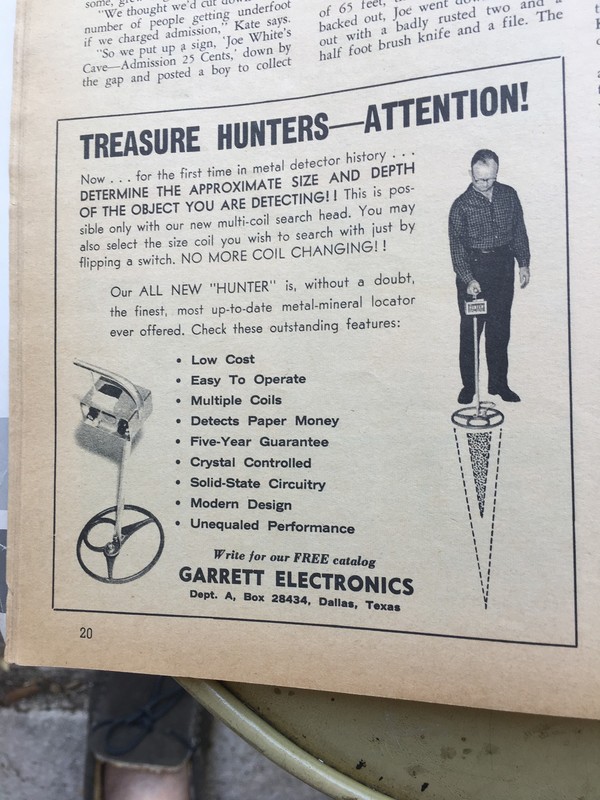
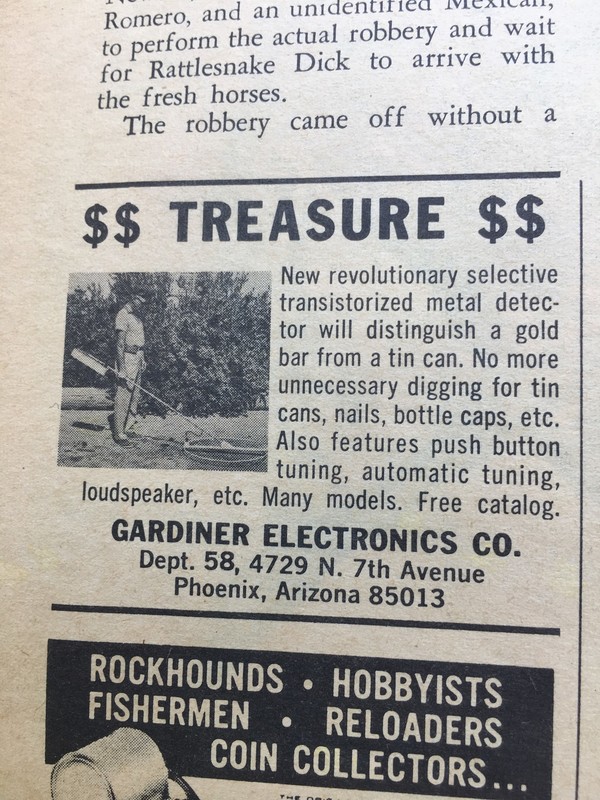
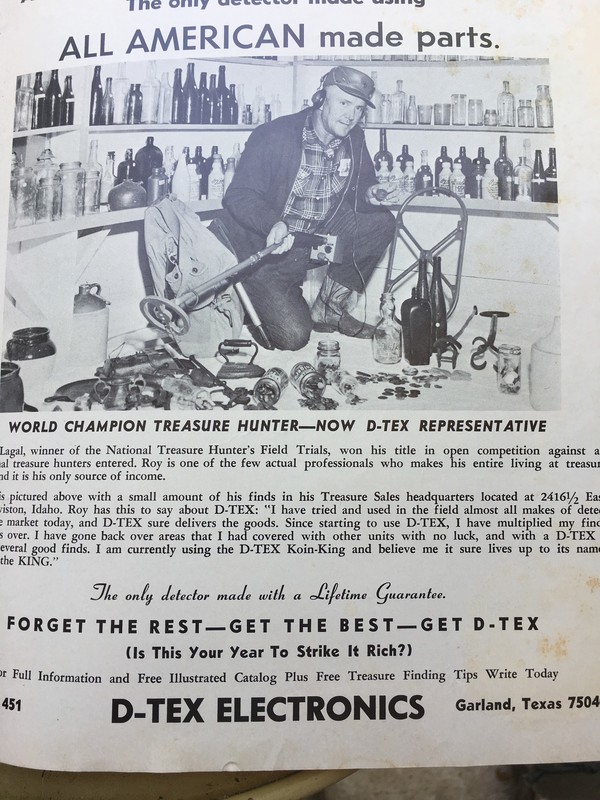
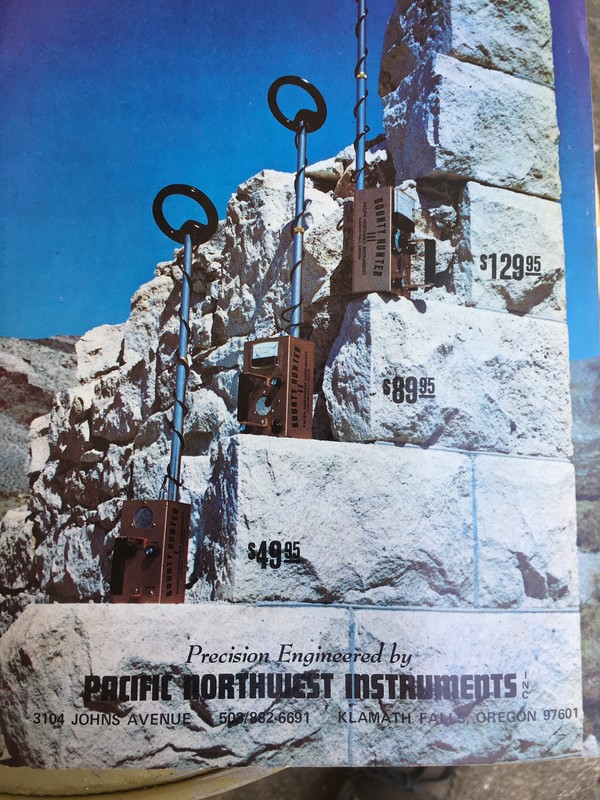

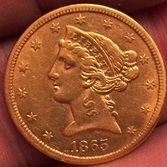
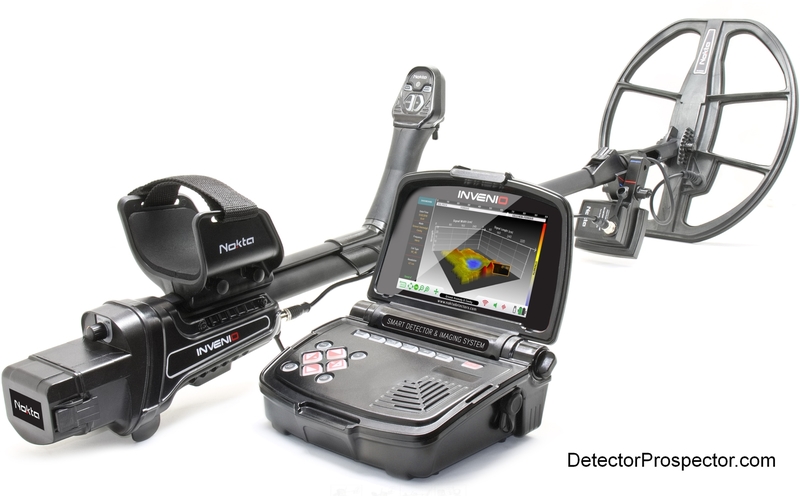


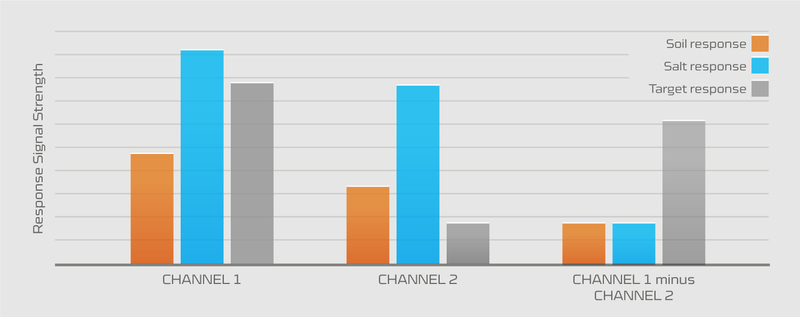
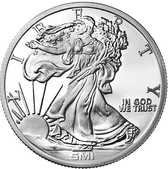


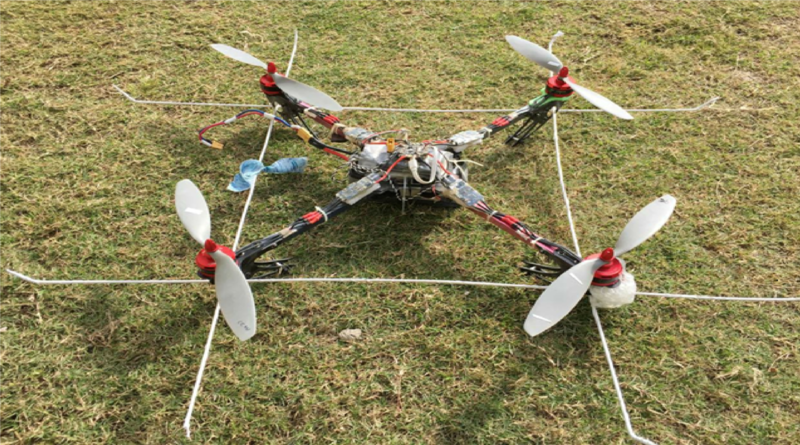

.thumb.jpg.c7214fa166c91b86e35403f780b2bc0f.jpg)



